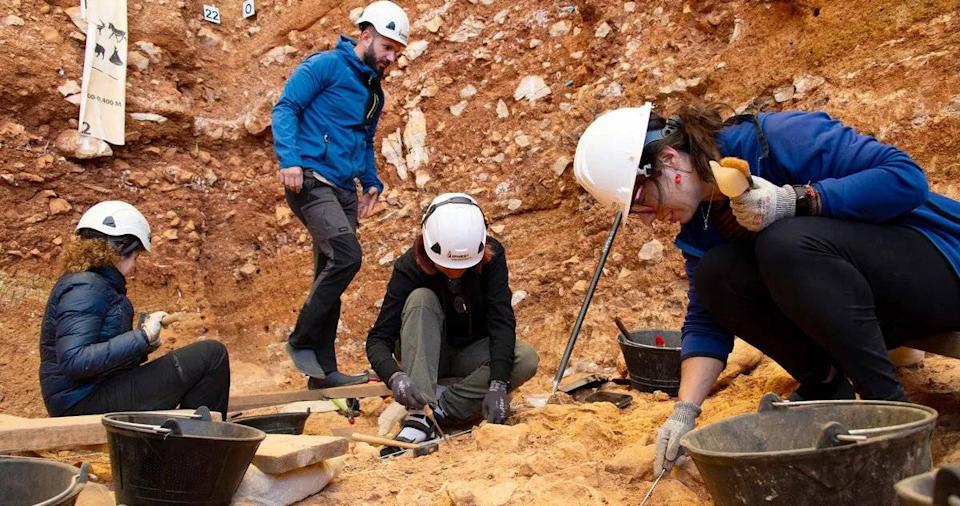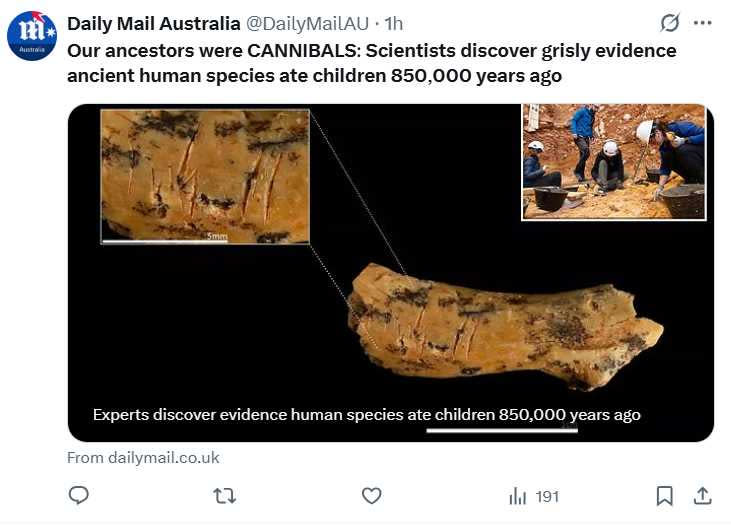850,000 years ago, ancient humans were suspected of cannibalism. Research reveals shocking findings: Evidence of children being slaughtered was exposed

Shocking archaeological evidence has recently been discovered in the Gran Dolina Cave in the Atapuerca region of northern Spain, showing that ancient humans about 850,000 years ago may have engaged in cannibalism, even including young children.
According to the Daily Mail, the archaeological team excavated a cervical vertebra belonging to a child aged about 2 to 4 in the cave, with obvious cut marks on the surface of the bone. Researchers pointed out that these marks showed that the child was beheaded and dismembered and eaten. The cervical vertebra fossil and other bones and teeth belong to the “pre-human species” (Homo antecessor), a human branch that is considered to be the common ancestor of modern humans and Neanderthals.

This discovery was made by the team of the Catalan Institute of Human Paleoecology and Social Evolution (IPHES), which has been excavating in the area for more than 30 years. The study pointed out that nearly one-third of the bones unearthed in the cave had cut marks, indicating that ancient humans at that time had widespread cannibalism.
“This case is particularly special, not only because the victim was very young, but also because the cuts were very precise,” said Dr. Palmira Saladié, co-leader of the research project. The marks on the cervical vertebrae are located in the key part of the dismembered head, which is direct evidence that the child was treated like prey.
In addition to the child’s bones, the site also found adult skeletons with marks of stripping and deliberate knocking, which is very similar to the way humans handle animal prey. Some skeletons even have human bite marks. Experts believe that this is the most convincing evidence at present that cannibalism did occur at that time.
The pre-human species lived about 1.2 million to 800,000 years ago. They were shorter and stronger than modern humans, with a brain capacity of about 1,000 to 1,150 cubic centimeters, slightly smaller than the average 1,350 cubic centimeters of modern humans. Studies have shown that they may have been right-handed and may even have symbolic language skills.
This new discovery is regarded as the earliest direct evidence of cannibalism among young children to date, and it has brought new discussions on early human society and survival strategies. The research team pointed out that this behavior may be related to food shortages, or it may be part of territorial control or rituals. “Every year we are unearthing new evidence and rethinking how ancient humans lived, died, and even treated the dead nearly a million years ago,” said Saladie. In the past, archaeologists have found traces of cannibalism of human relatives 1.45 million years ago in Kenya, and have also found that early British people not only ate their own kind but also made skulls into cups in Cheddar Gorge in the UK. The latest evidence from Spain further shows that cannibalism is not uncommon in early human history, but may be a recurring behavior pattern.
![]()







